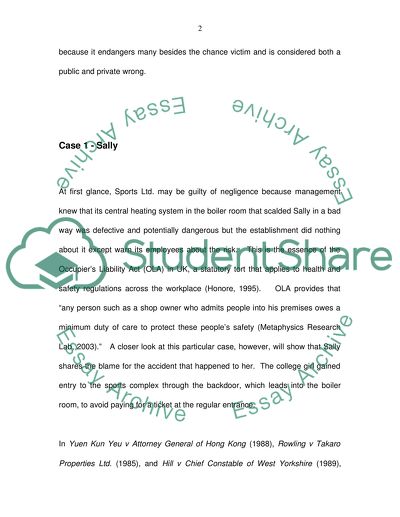Liability of Employers and Occupiers Case Study. Retrieved from https://studentshare.org/law/1523167-liability-of-employers-and-occupiers
Liability of Employers and Occupiers Case Study. https://studentshare.org/law/1523167-liability-of-employers-and-occupiers.


